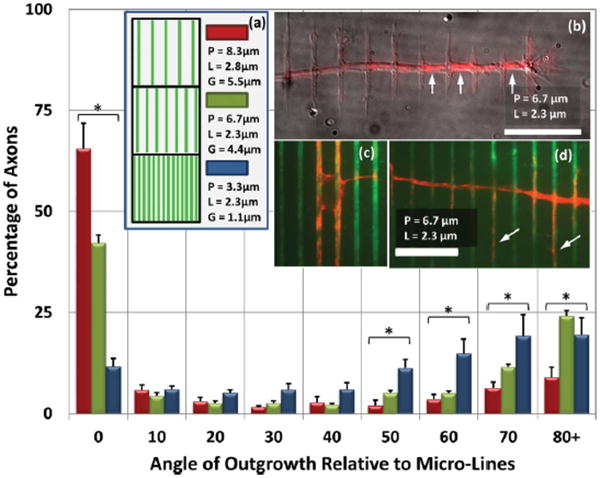Fig. 2.

Axonal Orientation on Micro-Lines of Constant L, Varying G (a) Micro-line patterns of constant line width (L = 2.55 ± 0.25 μm) are created with a variety of periodicities (P), resulting in a varied gap width (G). These data show axonal outgrowth direction on PLL patterned micro-lines on PDMS. The outgrowth angle is defined as an angle between micropatterns and a straight line drawn from the soma to the axon tip. The axonal orientation is dominantly parallel for larger values of P. However, as P is decreased, perpendicular guidance is also observed. Error bars: ± SE. Outgrowth directions marked with * indicate p < 0.01 for different values of P by single-factor ANOVA. (b) Perpendicular axonal outgrowth as seen on a P = 6.7 μm substrate. The image shows α-tubulin (red) overlaid on a DIC image (grey) (scale bar = 20 μm). Although a plurality of axons on this geometry grow parallel to the pattern with high fidelity, several axons turn in a perpendicular direction to the pattern. Along the perpendicular axonal shaft, several periodic extensions are growing on and parallel to the pattern, a hallmark of ‘vinculated’ growth. Interestingly, microtubules appear to be more concentrated in the gaps between lines (arrows). (c) The soma of a neuron with outgrowth oriented parallel to the micro-lines (green: FITC-PLL). (d) When perpendicular vinculated outgrowth is observed on the P = 6.7 μm micro-lines, frequently microtubules are seen invading orthogonal extensions (arrows). Scale bar (c) and (d): 20 μm.
